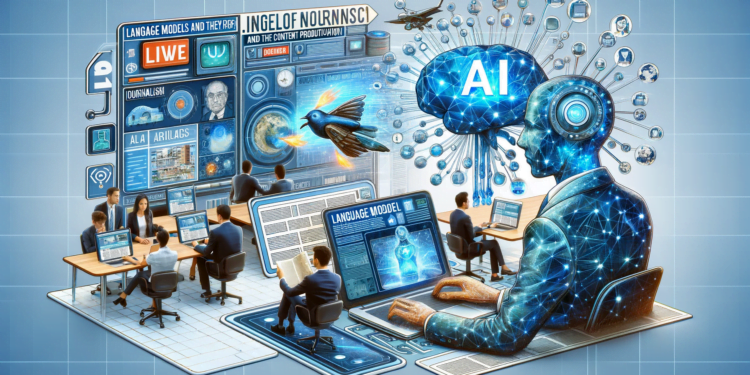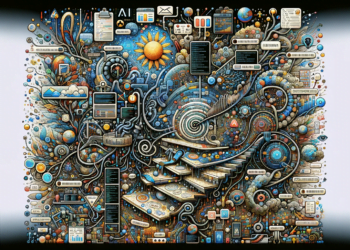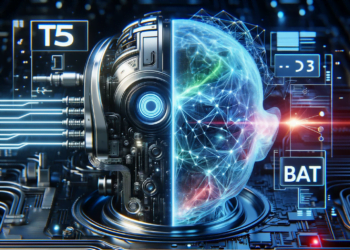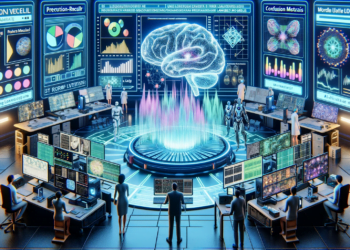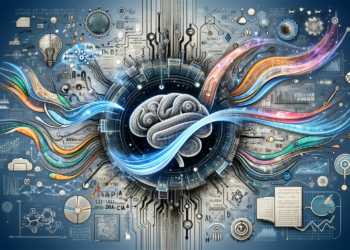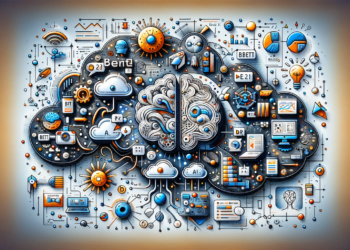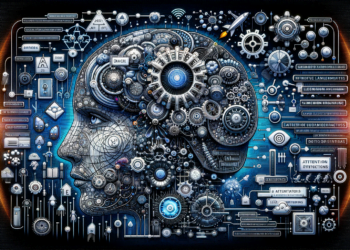At the forefront of artificial intelligence (AI), generative language models are reshaping the landscape of journalism and content production. Stemming from the emergence of deep neural networks and self-learning algorithms, these tools are not only automating tasks but also generating new forms of digital narrative.
Theoretical Foundations: From Turing to Transformer
The odyssey of artificial intelligence in the linguistic domain dates back to the Turing test, designed to assess a machine’s ability to exhibit intelligence that is indistinguishable from that of a human. With the advent of complex architectures such as Recurrent Neural Networks (RNN) and the subsequent evolution towards attention mechanisms, the capacity of AI to process language has advanced exponentially.
The qualitative leap came with the introduction of the Transformer architecture, enabling contextual learning and efficiency in the parallel processing of data. This groundwork paved the way for the development of models like BERT (Bidirectional Encoder Representations from Transformers) and GPT (Generative Pre-trained Transformer), which are now ubiquitous in text analysis and generation.
Recent Technical Advances
The current leadership in natural language generation is held by GPT variants, such as GPT-3 and its successors, capable of creating coherent and surprisingly human-like texts thanks to their training on vast amounts of textual data. These models employ fine-tuning techniques, where a pre-trained model is adjusted for specific tasks, unlocking its utility in various fields, including journalism.
These models have evolved towards more efficient parameter learning, with developments like distillation and sparse encoding allowing them to maintain performance with reduced computational requirements. A cutting-edge topic is the incorporation of multimodal models that integrate textual information with other types of data, such as images or sounds, broadening the scope of content analysis and generation.
Impact on Journalism and Content Production
The journalistic context has been one of the most influenced by these advances. Language generation models are facilitating everything from the automatic creation of news drafts to the generation of complex data-driven narratives, enabling a more agile and personalized content production.
The current scenario presents a symbiosis between AI and journalists, where AI assists in repetitive or data-heavy tasks, allowing journalists to focus on critical analysis and interpretation. Case studies like the RADAR project by the PA (Press Association) in the UK demonstrate how thousands of journalistic reports can be generated from public data sets, a task that would have been impractical manually.
Comparison with Previous Work
Compared to the first rule-based editorial automation software, contemporary language models represent a significant leap both in versatility and depth of content. While systems based on predefined templates limited variability and text fluidity, current models, with their ability to learn and adapt to different styles and contexts, have transcended these barriers.
Outlook on Future Directions and Innovations
Looking ahead, models with advanced cognitive capabilities that could perform more sophisticated inferences and understand even more complex contexts are anticipated. The emerging practice of endowing language models with self-awareness functionality could lead to applications where explainability and transparency in content generation are paramount.
Additionally, the integration of ethical algorithms and the development of mechanisms to reduce biases are areas of crucial innovation, aiming for an artificially intelligent journalism that is fair and equitable.
Emerging Practical Applications
Not only in the field of information do we find practical applications; in the creative sphere, language models are contributing to the development of AI-generated literature, scripts for audiovisual media, and interactive content in video games. Relevant examples include the automatic generation of dialogues in games that adapt to the player’s style and choices, adding an unprecedented layer of customization.
Conclusions
Generative language models are redefining the possibilities in the creation of journalistic and creative content. Their constant evolution suggests a future where machines will not only complement but also enhance human creativity and intellectual production. However, it is essential that research continues to mitigate limitations and associated ethical risks. With a balanced approach between technological expansion and ethical considerations, AI will establish itself as a fundamental pillar in the narrative and journalism of tomorrow.

